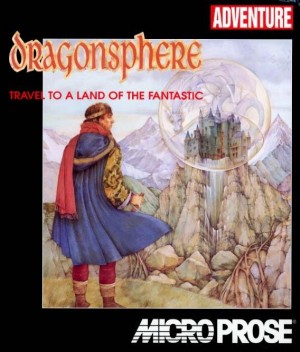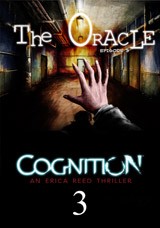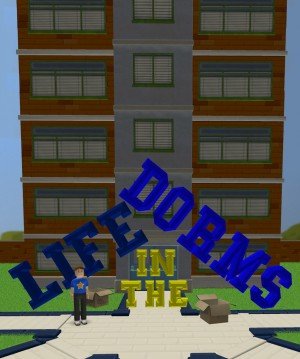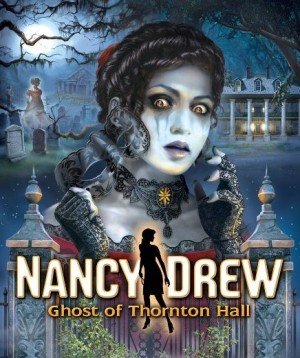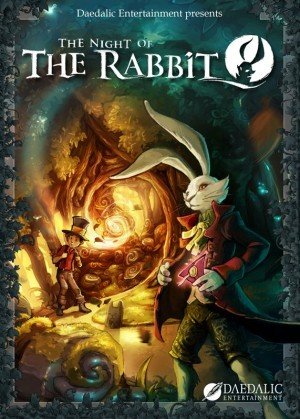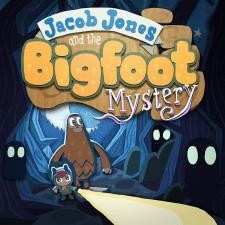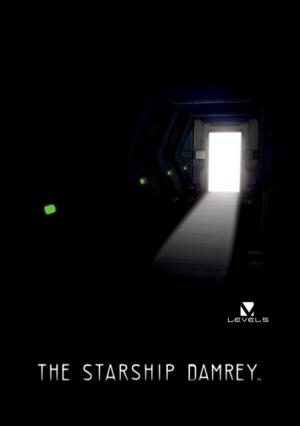Review for The Unfinished Swan
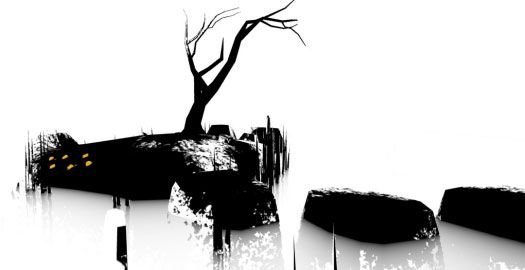
Every artist—whether a writer, painter, game designer, or one whose creativity lies in some other medium—knows something about leaving work unfinished. The creator may spend months or even years thrashing around in an unrealized world, trying to make it presentable to an audience. The challenge is to not give up, to stay motivated and persevere until the elements fall into their natural spaces and the world takes shape. The Unfinished Swan, a PlayStation 3 exclusive from indie developer Giant Sparrow, is a short, sweet game that delves into this puzzle of creativity left hanging—an adventure where the place you’re exploring is only half-formed.
Under the guise of a children’s bedtime story, The Unfinished Swan tells the tale of a blond boy named Monroe who has just lost his mother and been sent to live at an orphanage. He brings with him a silver paintbrush that his artist mother left behind, along with one of her paintings: a swan she never finished. One night the swan comes to life and steps out of its canvas, leaving behind a trail of footprints for Monroe to follow into the curious world you must piece together to reach the end of his story.
This intro, along with other cutscenes that occur at the beginning and end of each of the game’s four chapters, are shown and narrated as in a children’s storybook. Short sentences in a black serif font are displayed on mostly-white “pages,” accompanied by simple black-and-white line drawings with occasional splashes of color, such as Monroe’s yellow hair and the swan’s orange beak and feet. As such cutscenes play out, the story is read aloud by a woman who would be right at home at story hour at the public library. Part fairy tale, part allegory, the narrative involves the king who rules the land where the game is set and Monroe’s dead mother, both artists with a habit of leaving their work incomplete.
This is a first-person game, navigated with the controller’s left analog sick to move and the right stick to pan the camera. After the brief introduction, you’re deposited onto an all-white screen with no tutorial or instructions, wind chimes and the occasional screech of seagulls providing the only clues to your location. Move the left stick and the sound of footsteps suggests that Monroe is on the move, but the screen remains entirely white. It’s only when you pull the right trigger button that the world begins to come into focus, because this flings a ball of black paint onto the blank canvas. As you’ll soon discover, this apparently empty world is in fact a fully realized 3D environment, but all of its elements are white. By flinging paint, you assign definition to the area around you and gradually begin to make sense of this unfinished place.
Paint spatters provide hints to where walls and other obstacles begin and end, which allows you to start exploring. The initial area at first seems like a maze, but soon enough your paint blobs begin to land on trees, a fence, and rocks, creating black outlines against the white backdrop. There’s also a pond nearby, where the paint “plops” as it lands and sinks out of view. Once you find your way through this initial area a garden takes shape, with Romanesque columns, stairways, statues, and iron gates among the obstacles Monroe must navigate around. The extreme contrast of the world that emerges under your haphazard paint flinging is striking and beautiful in its black-and-white simplicity.
In general, your goal is to follow the swan’s orange footprints, which appear five or six at a time along the path it's traveling. Sometimes you can see the footprints in the distance but need to identify obstacles before you can reach them, such as a pond that can only be crossed once you outline the log bridge draped across it. To uncover such gateways, you must fling paint strategically, teasing out the items positioned around you and figuring their spatial relation to each other. Brute force doesn’t work as well, since drenching an area in paint just turns everything black, as indistinguishable as when everything is white. (You can still find your way around after going nuts with the paint, but with a less clear sense of where you’re going.) Be more sparing with your paint, however, and the resulting spatters will hint at the shapes of objects, the relationship between black and white allowing you to see what’s not there. Although the gameplay evolves and the visuals become more defined as Monroe moves through the land, the graphics are always appropriately unfinished: 3D objects that lack the color and detail normally provided by textures.
The bedtime story laid out in The Unfinished Swan’s opening cutscene continues page by page as you explore, courtesy of story snippets that are hidden around the world. Like in a book where the first letter of a new chapter stands out from the others with a different size or font, these pages’ first letters are gold, which can be seen against the white environment. Throw paint at a gold letter and the entire page comes into view, narrated by the same story-hour woman as the game’s cinematics. These loose pages tell of the king who created this place and chose to leave it colorless.
The music is appropriately childlike, sounding sometimes like a music box and other times like a lullaby, but with only a handful of themes it gets repetitive. The effects, on the other hand, are incredibly well done. In a game where your sense of sight is acutely limited, the ambient sounds we normally take for granted in games become important clues. Footsteps, water splashes, and the rustling leaves of a growing vine help you understand the immediate area. Blowing wind, bubbling noises, or an animal’s screech might indicate that Monroe has entered an area with lurking dangers. And occasionally the swan honks to let you know it’s nearby, so you can be on the lookout for a new set of orange footprints.
Each chapter presents a new area to explore with new gameplay mechanics. Gradually, the all-white world evolves to include shades of gray, and later to incorporate foliage, bodies of water, darkness, and other visual elements that make an impact against this incomplete canvas. The second chapter takes place in an empty city with scaffolding and vines to climb and some (easy) Myst-like contraptions to figure out. Monroe’s black paint balls are replaced with water here, and the gameplay becomes less about figuring out where you are and more about making things work. You’ll fling water at levers and paddles to initiate mechanical solutions such as lowering a drawbridge, and throw it at vines to make them grow. As with the black paint, you can also use water to define an unfinished area, but its aqua color is much harder to make out against white backgrounds and it clears after a couple of seconds, adding challenge to your exploration. The third chapter plays with the relationship between dark and light, introducing a nighttime environment with creatures that come after you if you stray too far from a light source, and the short fourth chapter ties together elements of the other three. Throughout, the gameplay is simple and accessible, with a focus on discovery and moving forward. The challenge lies in finding your way around, not banging your head against obtuse puzzles.
Most of The Unfinished Swan’s interaction involves walking and “shooting” paint, with little dexterity or precision required. When you press the X button Monroe makes a small jump, which helps you to get up onto slightly elevated surfaces such as ledges or rocks, but the game has few high-stakes jumps or timing-dependent maneuvers to stress out action-averse players. Climbing vines or ladders is as simple as moving up with the left stick, with no special combination of buttons required. Missing a jump or falling from a ledge might elicit a whoa or an oof! from Monroe, but he’s generally indestructible, with death occurring only under extreme circumstances such as falling out of the sky (it makes sense in context!) or into a body of water. In cases like these, the game deposits you right back where you were, without penalty. This promise of death can be annoying when you’re just trying to get the lay of the land in particular areas, but for most of the game it didn’t get in my way.
Sometimes I did get disoriented and frustrated trying to find my way around, however. I often experience some directional confusion in first-person, free-roaming games but in The Unfinished Swan, where the surroundings are not well-defined, my poor sense of direction was compounded by my inability to see the area I was trying to navigate. At one point in particular I spent a long, long time trying to get somewhere I didn’t even need to go, and the game didn’t provide any feedback to keep me on track. (Well, none other than allowing me to drown and respawn repeatedly.) I appreciate that the whole point of the game is to find your way around a place you can’t see, but that fact didn’t keep me from getting frustrated, so it’s a caveat to consider if you tend to have trouble with these types of controls.
At 3-4 hours in length, you can easily play through The Unfinished Swan in one sitting, and the sense of wonder that comes along with exploring this strange, unrealized place may lead you to do just that. Thanks to its vast locations, the existence of collectibles (hidden story pages and balloons that are scattered around the levels), and the potential to earn PSN trophies, you may even want to take a second run—but probably no thanks to the story itself. Though the parable of the artist king is amusing, I felt a step removed from it (especially at the end during what was supposed to be the big climax) and I’m not sure I would have missed the narrative if it hadn’t been there at all. That’s disappointing in a game that’s so obviously set up to spin a yarn. Near its finale the game takes a weird, abstract turn, and the story never satisfyingly fulfills the promise set up by the intro of a boy trying to cope with his mother’s death. But sometimes art is like that. I still had a great time playing in this unique world Giant Sparrow has created, even if it is imperfect.








